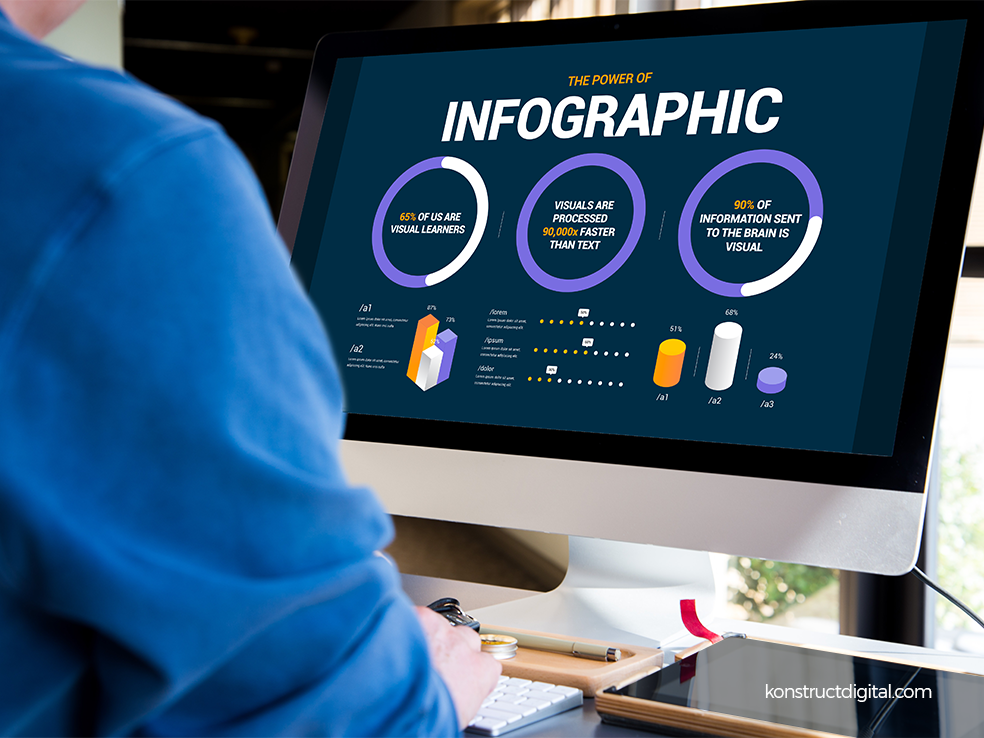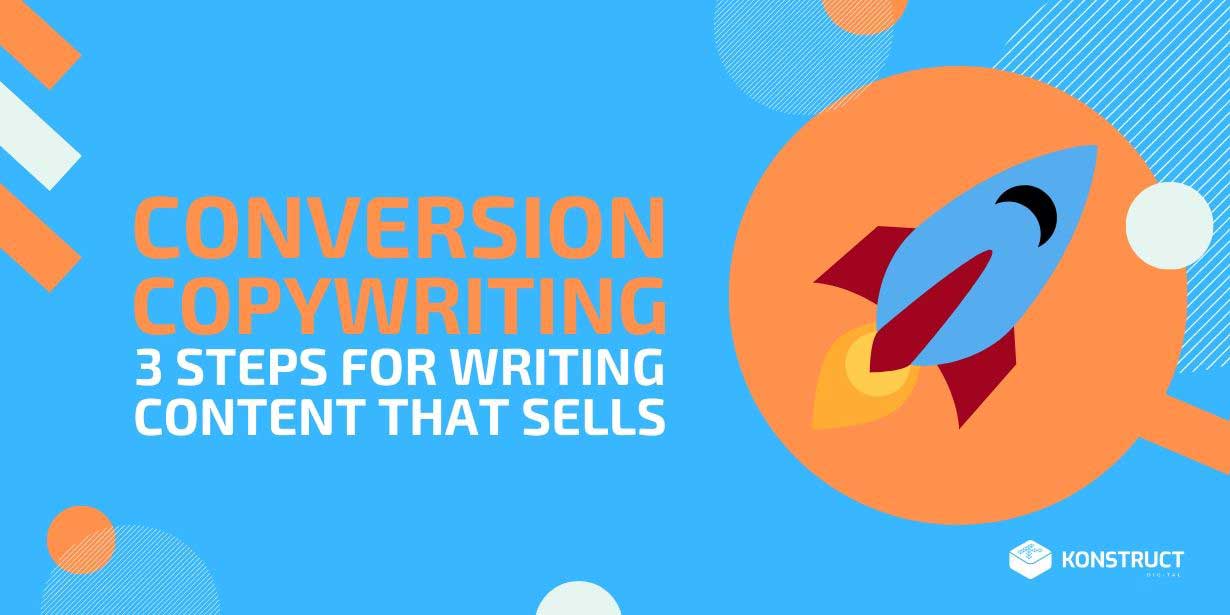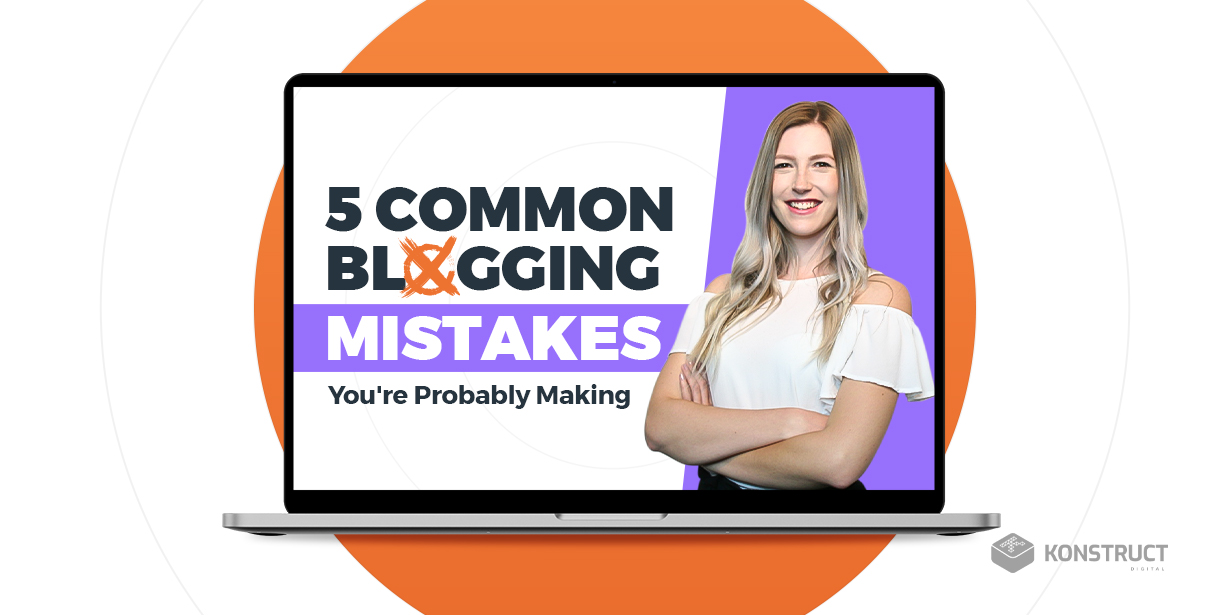So you want to build your brand and make your business’s online presence pop? You need to know about content development! Understanding the content development process is fundamental to establishing your business’s online presence across all platforms.
In this article, we’ll take you through an effective content development process from top to bottom, in 11 essential steps. We’ll also give you our battle-earned tips and tricks along the way.
What is Content Development?
Even though it sounds like content creation, content development is on a whole different level. It’s much more long-term than that. Content development is more akin to content marketing — in fact, they’re pretty much synonymous.
Content development is the entire process of making content for your website. It includes setting digital marketing goals and identifying your target audience, identifying areas of subject matter expertise and publishing cadence, reviewing and publishing content, and finally tracking the outcomes of that content and assessing whether it served the purpose you were hoping it would. Content development is an intensive process but the benefits of content development are massive.
Why Content Development is Essential
Now that we’re on the same page about what content development means, let’s take a look at how it will benefit your business.
Build Your Brand
Maybe you’re in a rare niche where you are the only one selling your product within 1,000 miles (or whatever the Internet equivalent of this is, from 1.1.1.1 to 255.255.255.255 I guess), but more likely you have competitors out there selling similar products. The best way to differentiate yourself is by letting your content be the voice of your brand and letting the reader connect with the personality behind the product.
Build Loyalty With Your Existing Audience
You want to continue to provide the people who have already made a purchase or rendered your services with helpful, free content that incentivizes them to stay with you and encourages them to be repeat buyers! When people are genuinely excited about a brand, they’re far more likely to spread the word about how great you are. Developing great content is one of the best ways to not only maintain, but grow that brand enthusiasm.
Broaden Your Audience
Think big! The north star of digital marketing is getting your brand in front of customers who would otherwise be outside of the reach of your regular channels (e.g. word-of-mouth, offline advertising, etc…) A strong content development strategy that prioritizes a mix of search-focused, share-focused, and conversion-focused content is the backbone of this.
Strategic search-focused content is especially effective for growing an audience, increasing brand reach, and ultimately driving traffic. When search engines determine your content to be high quality and notice people are enjoying it, they’ll absolutely reward you with higher rankings! That’s the beauty of SEO: so long as you’re strategic about it, it is the only digital marketing tactic that allows David (e.g. you) to beat Goliath (e.g. Amazon).
When people see you’re consistently developing high-quality content that interests and helps them, they’re also more likely to subscribe to your newsletter, sign up for a mailing list, and (hopefully 🤞) make a purchase!
Prove You Know What You’re Talking About
High-quality content that demonstrates your subject matter expertise can set you apart from the rest of the crowd. If someone is searching for a product and it’s down to two choices, do you think they’ll go with a choice that has low-quality or no content at all on their website? Or will they choose the business with tons of proof that they know what they’re doing?
Think of it like you’re walking through the mall. Two stores next to each other sell identical products. The only difference between them is that Store A’s staff are knowledgeable and happy to share that information with you and Store B’s aren’t really paying attention to you at all. Sure, Store B’s staff members are probably knowledgeable and their product is the same as next door, but selling a quality product is not always enough. Sometimes it takes a little extra oomph to make the sale!
Content development is just that: providing value beyond what’s expected of you.
Types Of Content

So, you’ve decided you want to create content for your brand. Great! But what kind of content would serve you best? What kinds of content are there? Let’s go through the list.
Blog Posts
Blog posts are one of the most important ways to drive traffic to your website. If you write about a variety of topics related to your industry and product, more people will find themselves on your site, increasing your visibility. The key is to create a few topic clusters and build a solid library of content that is easy to interlink.
Blogs offer you the opportunity to dive deeper into what problems your customers may be facing and how you can solve them. This makes you the obvious choice when it comes down to making a purchase and proves how valuable you can be.
Often, the most effective type of blog posts for increasing CTR (click-through rates) are listicles. People love numbered lists because it’s an easy way to consume content!
Videos
Videos are an absolute rocketship right now. Their popularity increases more and more every year and, with apps like TikTok that are entirely video-focused, it looks like that trend will continue.
According to Wyzowl, 78% of video marketers say video has directly helped increase sales. When the return on investment is that clear, it’s hard to deny the power of video.
It’s also easier to make entry-level video content now than it has ever been before. The cameras on most modern-day smartphones are incredible and editing apps are totally accessible with just a little know-how. There are tons of tutorials available on YouTube and Skillshare that will give you a solid place to start.
If that’s not a possibility for you or you’re looking for something a little more professional, you’re always able to hire someone to produce video content for your business. While it will cost more, it may also be more eye-catching to the average consumer.
It all depends on you and your business needs! If you think your patrons won’t mind video content with a little less polish, why not try making it in-house?
Podcasts
While an entire podcast may seem like a lot of work to produce — and it is — they allow you to reach clientele you otherwise wouldn’t have. If someone is interested enough in a subject to listen to a podcast, they’re exactly who you want to talk to.
Because podcasts are such an intimate medium, listeners feel like they get to know the hosts and eventually (hopefully) trust them. Once they trust you and your product, the sale pretty much makes itself.
Like videos, podcasts allow you to go much more in-depth than what is possible in other types of content. This helps you show how much you care about a given subject and gives you the opportunity to flex your knowledge.
Case Studies
Case studies are essentially in-depth testimonials/reviews from clients and customers describing their experience with your brand. They describe what their initial problem was and how you or your product solved that problem and improved their lives.
Case studies are a powerful form of content that can influence people to buy what you’re selling. According to Qualitrics, “93% of customers read online reviews before buying a product.” That’s a massive number. If you have the ability to influence which reviews a potential customer reads, why not do it?
Memes
If you have the ability to create memes, do it! There are tons of brands like Denny’s, Wendy’s, and Netflix whose successful content marketing strategies include sharing memes. This content marketing strategy has paid off for them and can definitely pay off for your brand too!
Be careful with this one though — do it wrong and you run the risk of being cringe.
Infographics

Infographics are exactly what they sound like: information graphics (we love a portmanteau!) They’re an excellent tool for presenting data or information to your audience in an easy-to-understand, visually pleasing way.
If you have the ability to make high-quality infographics, definitely do it! If you aren’t able to make your own, consider hiring a pro, especially if you have original research that would translate well visually. Infographics are incredibly shareable and all the links you’ll generate will help boost your search engine rankings.
The Content Development Process

So, now you know the kinds of content you can make and the advantages of each, but how do we go about actually making it? Here’s the step-by-step process. Since the content development process varies depending on the type of content you’re producing, we’re going to focus on sharing our process for developing blog posts for our clients at Konstruct.
1. Set Goals
What are you looking to get out of your content? Do you want to drive more traffic to your website, increase your share-of-voice, increase your perceived level of subject-matter-expertise, or all of the above?
Define what you’re hoping to get out of your content development strategy and set measurable goals. KPIs (key performance indicators) are a great place to start. Tracking these metrics will show you the difference before and after your content development investment.
2. Identify Your Target Audience
Next, it’s time to figure out your buyer persona. Who is your content directed towards? It’s likely that you already have a general idea on who to target, but if not, chop-chop!
Once you know who you’re talking to, it’s easier to create relevant content that suits their needs and encourages them to engage with you more often.
To create a buyer persona, take that rough idea of who’s buying your product and turn it into a person. Find a picture that represents what you think they would look like and make them a profile! Imagine you’re making a Facebook profile for someone who doesn’t exist. Ask questions like:
- What do they like?
- What are their pet peeves?
- Are they single? In a relationship? Married?
- Do they have kids?
- How much money do they make?
These aren’t the only questions you should ask, so go as deep as possible! The more you know about this person, the easier it will be to write content for people like them.
3. Analyze Your Competition
It’s important to know what the store next door is up to. Do they have a clear content development plan in place? Take some time to do your research and judge their content’s effectiveness.
Can you provide the expertise that they can’t? What do you provide that can make you stand out? Once you’ve answered these questions, you’re well on your way!
4. Create a Content Creation Framework
A content creation framework can help you stave off one of the worst things that someone in your position can fall into: writer’s block.
You want your framework to be repeatable but not boring. If you just make the same post over and over again, your followers are going to get bored and question your authority on the subject. The perfect template ensures every post is different enough to the average reader but similar enough that each piece of content isn’t so labour-intensive. A content creation framework will help with the long-term sustainability of your brand.
5. Find the Perfect Target Keywords
Before you can get to writing your content, you have to do your keyword research. Keywords are fundamental to the SEO process. Optimizing your content for the proper keywords will ensure that once your piece goes live on your website, people will be able to find it.
The perfect keyword has relatively high search volume (people are actively searching for it), low competition (there aren’t a lot of others trying to rank for it) and matches the intent of the article or content piece.
6. Brainstorm Ideas for Great Content
Once you’ve figured out keywords and have a framework for the types of content you want to create and how often you want to post, it’s time to start coming up with content ideas.
Don’t forget to leverage the help you have around you! Plan a meeting and ask team members who aren’t involved in the content development process for their ideas. It’s always helpful to get a fresh perspective. Consider asking your sales team or anyone else who speaks directly to clients and customers because they’ll have insight into exactly what your target audience is looking for.
For articles with search intent, it’s a good idea to look at the SERP space for your target keyword. What are the pages currently ranking for your desired target keyword talking about? This will give you a better idea of the type of content you need to produce in order to rank.
Your brainstorm should be focused on coming up with creative ideas that serve the keyword you’ve selected. Write down every idea you have — they don’t have to be perfect right off the bat — great ideas often aren’t. This just gets the creative juices flowing and allows you to prep a good variety of ideas so you can select the best ones for your editorial calendar.
7. Create a Content Calendar
A strong content development strategy involves creating content calendars. Planning for when and what you’re going to post content will help your overall content development plan as well as helping you and your team meet deadlines. Not to mention, posting consistently on a schedule is one of the most important steps to digital success.
8. Write Your Content
We’ve finally made it to the point where you sit down and write the content. Unless you have a standing desk…then stand up and write the content! Either way, it’s time to start writing!
Writing is hard. Hopefully steps 1-7 have helped get your brain into the right place where the content just pours out of you, but in case they haven’t, here are 6 tips:
- Start with a great headline.
You want to grab your audience’s attention as soon as possible and make them feel that they’re missing out if they scroll past your content.
- Write to your target audience.
Remember in step 2 when you created a buyer persona? Remember that they are the ones who you want to be consuming your content! What do they want from you?
- Stay focused.
Pick one focus for your article and stick to it. That’s not to say there isn’t room for a tangent or two, but make sure they tie back into your focal argument.
- Add depth.
Presumably, you’re writing this content because you have expertise that others don’t. Be sure to share it! If you’re writing an article that anyone else could have written, what’s the point? Bring something new to the table.
- Include a call to action.
When someone finishes reading your article, what’s their next step? You don’t just want to leave them hanging so give them an option to engage. Whether that’s a comments section at the bottom of your page or a form where they can sign up for your newsletter, you want them to continue to engage with you.
- Take a break.
If you’re struggling to write your content after all this work, try taking 30 minutes to give your mind a little rest. Go for a walk or watch some TV — just get your mind off the content for a while. You’ll often find that just a short break is enough to reset your creativity and get the creative juices flowing again.
9. Optimize for Search
This is all great but if your article isn’t ranked high enough for anyone to find your content, what’s the point?
That’s where search engine optimization comes into play. Here are a few things you can do to optimize your article:
- Review competitor outlines and ensure that you have covered all the necessary topics related to your keyword.
- Ensure that you have used an exact match of your target keyword in your page title.
- Optimize your image titles with related keywords and add alt text.
- Find relevant opportunities for other articles on your website to link to your new article and vice versa.
Optimizing your content will help to increase your SERP rankings which, in turn, will drive organic traffic to your domain.
If search engine optimization isn’t in your wheelhouse, our SEO team would love to help you out!
10. Publish and Promote Your Content
Similar to optimizing your content, promotion is a massively important step! You want the maximum number of people to see your post, so here’s what we recommend:
Find out where your audience hangs out most. Is it social media platforms like Facebook, Instagram, Twitter, or LinkedIn? If so, posting the link to your content there will increase engagement and send visitors to your website.
If one platform drastically outweighs the others, consider prioritizing your content for that platform. That doesn’t mean you should ignore the others — if your content lives in more places, it can help you drive more traffic.
If you send out a newsletter, include a link to your content! People who have already given you their contact information clearly enjoy the content you’re putting out. Make sure they know when there’s something new for them to enjoy.
11. Review Your Content
Figure out where your content strategy is working and where it can use some editing. Did your post rank well on the SERP? If not, what happened?
To check how your SEO efforts are working for you, the Google Search Console is your best friend.
Over time, you’ll find what works best for you but we recommend tracking impressions, organic search traffic and page rankings. If you want a full list of important things to track in order to maximize your SEO results, we wrote a whole blog about it!
If you’re still not seeing results, you might want to tweak your content marketing strategy for posts moving forward. Remember, your strategy is not set in stone. If it isn’t working, there’s no harm in changing things up a bit.
How a Digital Marketing Agency Can Make Your Business Shine

Successful content development is a lot of work. It isn’t as easy as the pros make it seem. These are 11 steps to get you started but, as you’ll experience along the way, there are many things that go into it.
If you’re feeling overwhelmed, don’t worry at all! Konstruct Digital can help. We can handle your content development process from start to finish, increasing your leads, conversions, and traffic while you do what you do best: run your business. Contact us today!








